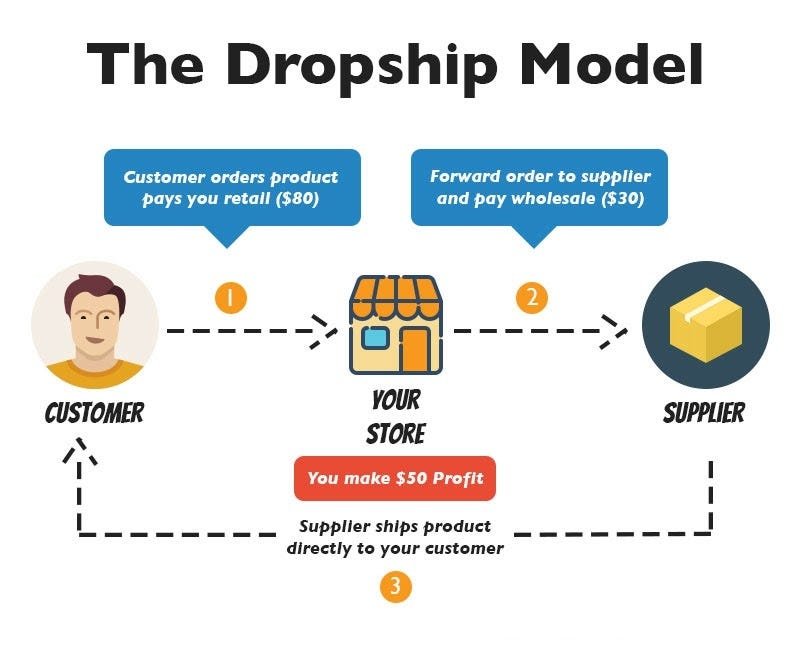The rise of the internet has transformed the way businesses operate, giving birth to various e-commerce models that offer entrepreneurs diverse avenues to reach customers. Among these models, dropshipping and traditional e-commerce stand out as prominent options. Each approach has its own set of advantages and disadvantages, catering to different business goals and preferences.
Low Initial Investment
One of the most enticing aspects of dropshipping is the minimal upfront investment required. Traditional e-commerce often demands significant capital for purchasing and managing inventory, while dropshipping allows entrepreneurs to start with little to no inventory costs.

Reduced Risk
With dropshipping, the risk associated with holding excess inventory is eliminated. Since products are sourced from suppliers only after a customer places an order, there’s no need to worry about unsold items tying up capital.
Also check: Top 10 Best Website Design Agency in Canada
Also check: Top 10 Best Website Design Agency in London
Wide Product Range
Dropshipping enables businesses to offer a wide variety of products without the constraints of physical inventory. This flexibility allows entrepreneurs to quickly adapt to changing market trends and consumer preferences.
Location Independence
Entrepreneurs can manage a dropshipping business from anywhere with an internet connection. This level of flexibility is attractive for individuals seeking to operate their business remotely or as a side venture.
Easy to Start
Launching a dropshipping business is relatively straightforward. Many platforms offer user-friendly interfaces and tools to set up an online store quickly, making it accessible to those with limited technical knowledge.
Thin Profit Margins
While dropshipping reduces upfront costs, it often leads to thinner profit margins due to increased competition and reliance on supplier pricing. This can make scaling the business and achieving substantial profits more challenging.
Dependence on Suppliers
The success of a dropshipping business hinges on the reliability and efficiency of suppliers. Poor inventory management, shipping delays, or product quality issues can negatively impact the entrepreneur’s reputation and customer satisfaction.
Limited Brand Control
Dropshipping businesses often struggle to establish a unique brand identity. Since products are sourced from suppliers, entrepreneurs have less control over product design, packaging, and branding.
Higher Fulfillment Costs
While not bearing the cost of storing inventory is a benefit, dropshipping businesses may face higher individual fulfillment costs since products are shipped separately from various suppliers.
Market Saturation
The barrier to entry for dropshipping is relatively low, leading to a crowded market with numerous competitors. Standing out in a saturated market requires effective marketing strategies and product differentiation.
Greater Control
Traditional e-commerce allows entrepreneurs to have full control over inventory management, product quality, and branding. This level of control can contribute to a more consistent customer experience.
Higher Profit Margins
By purchasing products in bulk and managing inventory, traditional e-commerce businesses can negotiate better prices with suppliers and achieve higher profit margins compared to dropshipping.
Brand Building
Establishing a strong and recognizable brand is often easier in traditional e-commerce. Entrepreneurs can design and package products according to their vision, fostering a loyal customer base.
Product Differentiation
Traditional e-commerce businesses can offer unique products or product variations that are not readily available in the market. This differentiation can lead to a competitive edge and customer loyalty.
Long-Term Relationships
Dealing directly with suppliers and managing inventory can foster long-term relationships and potential partnerships, allowing for more control over the supply chain.
Higher Initial Investment
Traditional e-commerce demands a substantial upfront investment in purchasing inventory, warehousing, and potentially a physical store if applicable. This can be a barrier for individuals with limited capital.
Inventory Risk
Holding inventory carries the risk of products becoming obsolete or unsold, leading to potential financial losses. Effective inventory management is crucial to mitigating this risk.
Operational Complexity
Managing inventory, order fulfillment, and shipping can be complex and time-consuming. This complexity may require additional personnel, resources, and systems to ensure smooth operations.
Geographical Limitations
Traditional e-commerce businesses might face challenges in reaching a global customer base, especially when dealing with international shipping and distribution.
Reduced Flexibility
Traditional e-commerce businesses may struggle to adapt to rapid changes in market trends or customer preferences due to the commitment to existing inventory and production processes.
Conclusion
Both dropshipping and traditional e-commerce have their own set of advantages and disadvantages, catering to different entrepreneurial aspirations and business models. Dropshipping offers a low barrier to entry, reduced risk, and flexibility, but comes with thin profit margins and limited control over branding.
.
.
.
All images are taken from Freepick, Unplash, Pixabay, Internet & from respected Companies

